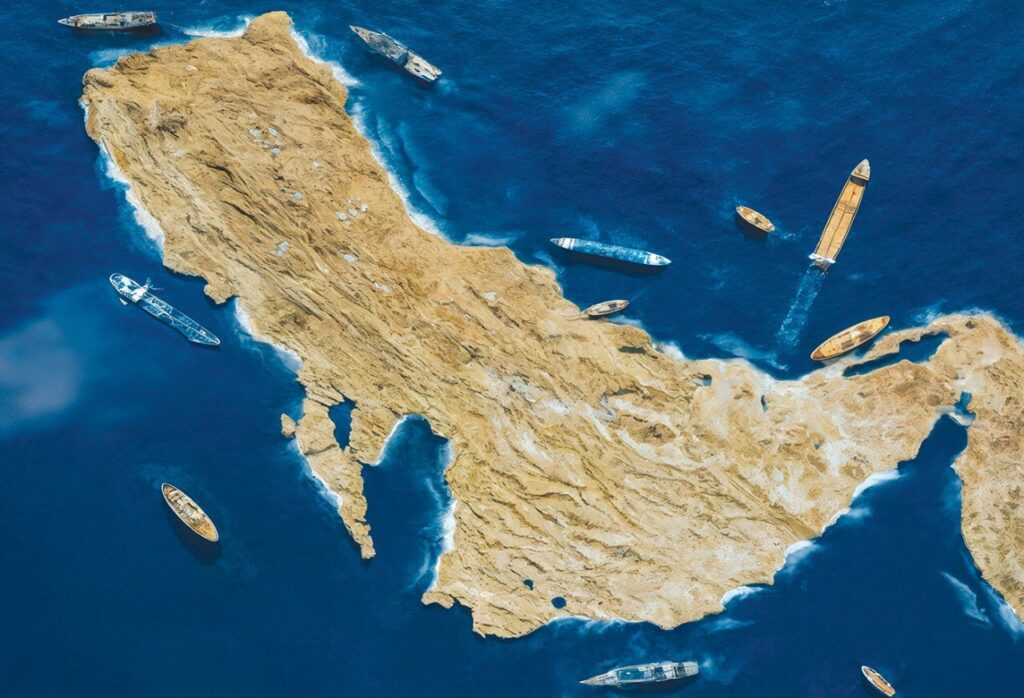Tehran – Land or water bodies can hold a variety of meanings. For example, the Persian Gulf is an important waterway for global oil transport, an exotic destination for tourists and a geographical location for the military. But for those who have thrived along the coast for thousands of years, it is a heritage and is so deeply ingrained that it is so intense in itself that a flood of propaganda and political manipulation can’t really wash it down.
A recent report claiming that US President Donald Trump intends to announce Washington’s perception of the Persian Gulf as the “Arabian Gulf” has sparked a strong Iranian response, ranging from anger and mistrust to full ridiculous laughs. This follows previous cases of Trump calling the Gulf of Mexico the “American Gulf” and pressured companies like Google and Apple to adopt new names, and according to some accounts it banned reporters who used the original name who attended the White House briefing.
However, Trump’s efforts to change the name of the Gulf of Mexico have not been spreading internationally. The United Nations, geographical societies, and countries around the world are still referred to as the Gulf of Mexico. The potential move to renaming the Persian Gulf faces even greater challenges. The latter has been mentioned so for at least 2500 years, far ahead of the existence of the US and Arab countries in the region.
Persian Gulf era
The primitive form of the Persian Gulf is thought to have been formed along southern Iran by the structural interaction of African and Eurasian plates around 500,000 years ago.
The earliest documented name of the inlet was the ancient Elamite Assyrian text “Nar Marathu” (Bitter River). By the 6th century BC, the terms “Persian Gulf” or “Persian Sea” were commonly used.
A inscription by Darius the Great, found near the Suez Canal, calls it “Darry? ty?hach?p?rs?yity” – “The sea from Persia.” After conquering Egypt around 500 BC, Darius ordered the Suez Canal to be reopened and established the first Naval Fleet of Persia. The inscription commissioned by Darius declared, “Our ship sailed to the sea that came from Persia.”
Niacchus, the admiral of Alexander the Great, explored the South Seas in 326-325 BC, documenting his journey from the Indus River to the Persian Gulf. Greek historian Flavius Arian preserves a summary of this account, calling the body of water the “Persian Kaitus” (Persian Gulf). Greek geographers like Strabo (1st century AD, 1st century BC) have consistently used the name “Persian Gulf.”
Roman historians and geographers, including Claudius Ptolemy (2nd century CE) and Quintus Curtius Rufus (1st century CE), also adopted terms such as “Persian Cave” (Persian Gulf) and “Persico of the Aquarium” (Persian waters).
Post-Islamic sources have abundant references to “Bar al-Faz” (Persian Sea) and “Kharij al-Farsi” (Persian Gulf) and appear in the works of Ibn Faki (9th century), Ahmad ibn Rasta (9th century), and Al Birni (11th century) (13th century) (13th century). century).
Even European colonial powers, including the British Royal Navy, used the “Persian Gulf” for their official maps and guides since 1868.
The misname “Arabian Gulf”
Historically, the term “Arabian Gulf” referred to the Red Sea, as evidenced by the works of Miletus, Herodotus, Strabo, and Hekataeus of Ptolemy. The attempt to apply the name “Arabian Gulf” to the Persian Gulf began in 1958 when General Abdul Karim Qasim of Iraq began to promote the terminology of political interests in sought for Pan Arab leadership. This was later echoed by Gamal Abdel Nasser during periods of tensions with Iran.
While Trump and attempts to manipulate Arab history are unlikely to ultimately change the name of the Persian Gulf, such a move could still affect regional ties and diplomatic dynamics.
“The name Persian Gulf is rooted in more than two thousand years of recorded history and global scholarships. The first attempt to distort this name is written by Ali Akbar Salehi, Iran’s Foreign Minister and current head of the Iranian Scientific Foundation.
Western Asia analyst Mostafa Najafi believes new pushes by several Arab countries to promote alternative names for the Persian Gulf could present a more important and fundamental strategy. He suggests that it could be hindering countries like the UAE. This claims to be Iranian island, Greater Tamb and fewer in-situ islands.
“Potential attempts by Trump’s administration to rename the Persian Gulf should be seen in the context of a broader regional strategy, which could lead to dangerous movements on the three islands,” Najafi said. He said, “If this happens, it suggests that the Arab countries surrounding the Persian Gulf, particularly the United Arab Emirates, are making concessions to gain certain advantages. Arabs learned from their previous hard-line approach to confining and facing Tehran.

